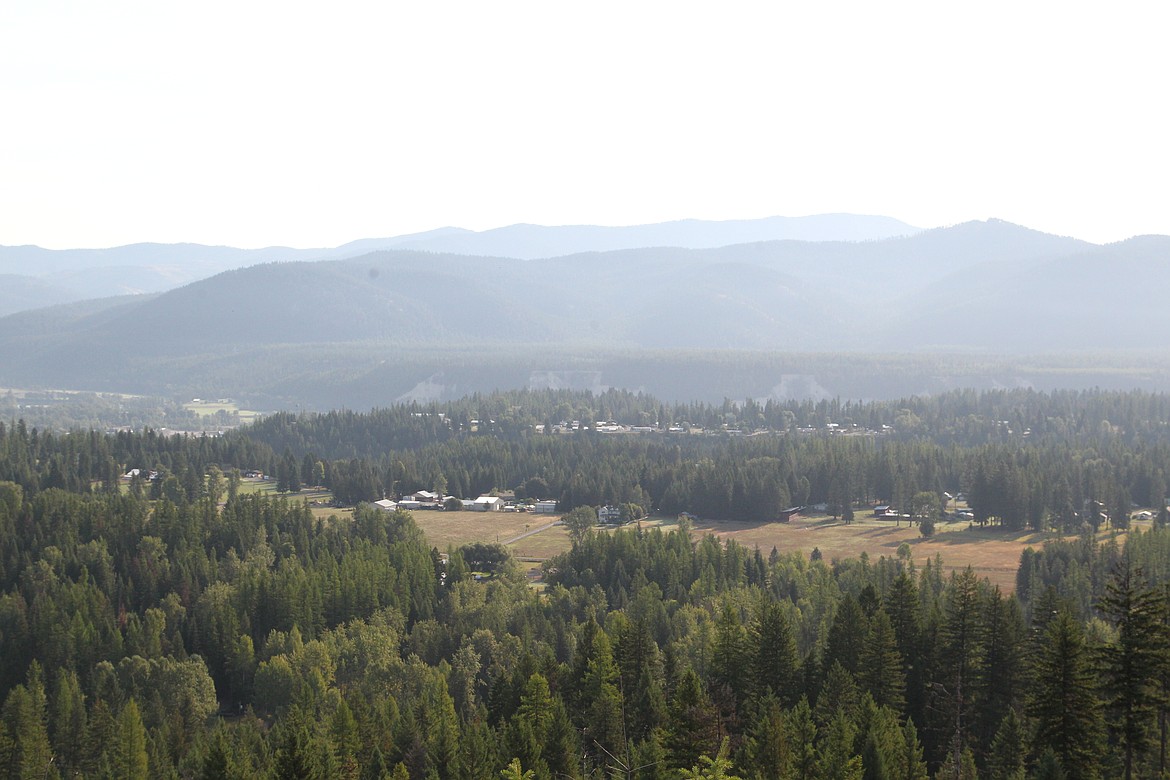Locals, Forest Service see hope for interface forest management
You’ll have to forgive Bruce Vincent’s enthusiasm when it comes to the potential he sees for the Kootenai Complex Project.
“It’s a game changer,” Vincent exclaimed at the July 27 Lincoln County Commissioners meeting. “After 40 years of jaw jacking, it’s huge. It’s the biggest positive news here in three decades.”
For Vincent, it’s been nearly 20 years since his family’s logging business closed down and he’s hopeful his family could return to it some day.
$19.3 million for forestry work in the Kootenai Complex Project, which includes Libby, Troy, Eureka, Stryker, Fortine and Trego, is coming to Lincoln County as a result of the federal, bi-partisan Infrastructure Investment and Jobs Act. $3 million is set to be dispersed this year.
Vincent was at last week’s meeting to thank Commissioners Jerry Bennett, Josh Letcher and Brent Teske for supporting the legislation that is sending hundreds of millions of dollars to communities at risk of suffering the devastating effects of wildfires.
“The money came here because of your efforts,” Vincent said.
The money will be used to do forestry work on 7,200 acres, which will include thinning, prescribed burns and planting. The work is expected to be completed over the next few years, with an initial 900 acres being treated by the end of 2022.
Bennett expressed his thoughts on the continual interruption by groups without consideration of the human element in the environment.
"Things are being litigated and we seem to have no input or say in the matter," Bennett said.
Vincent said massive wildfires in California have also helped advance the measure.
“When million dollar homes in Napa are burning up and communities such as Paradise are devastated with people dying, everyone takes notice,” Vincent.
The project is one of 10 identified under the federal Initial Landscape Investments plan to address the West’s worsening wildfire crisis. Other projects will take place in Washington, Oregon, California, Idaho, Colorado, New Mexico and Arizona.
Locally, Vincent believes the project can be a catalyst to change Lincoln County for the next century.
“We want to be in consideration for the next step,” Vincent said.
The next step, according to Vincent, is building a lumber mill that can process small diameter timber.
“The little stuff was going to Plummer, Idaho, when diesel fuel was $3 a gallon and now it’s $5 a gallon,” Vincent said. “The work can be done here.”
Vincent wants to see the county, community members and schools make a trip to Washington, D.C. to thank U.S. Forest Service Chief Randy Moore for leading the effort to manage forests.
“We need to let him know that we’re thankful you chose us and please keep an eye on us for public-private partnerships,” Vincent said.
Moore was appointed as the 20th Chief of the Department of Agriculture’s U.S. Forest Service in 2021. He is the first African American to hold the position. Moore was the Regional Forester in the Pacific Southwest Region in California from 2007 to 2021. He was responsible for 18 national forests covering 20 million acres.
“He’s been a breath of fresh air and he’s been brutally honest about what needs to be done,” Vincent said.
Another reason Vincent is optimistic are some of the Forest Service goals.
Kootenai National Forest Supervisor Chad Benson spoke at this week’s county Commission meeting.
“Our goal is to thin and manage 150,000 acres over the next 10 years in these firesides,” Benson said. “It doesn’t include other projects that are part of our normal, planned work.”
The plan, according to Vincent and Benson, is to create a self-sustaining model that will keep forests healthier, less likely to result in large, catastrophic fires in the Wildland Urban Interface and allow for an industry that creates jobs for local people.
“If 10,000 acres are managed every year for 10 to 15 years, by the time you get to the end of that time frame, it’s time to go back to where you started and continue thinning,” Vincent said. “That creates financial certainty for anyone considering putting a lumber mill here.
“It’ll cost upwards of $200 million to put a mill in and any private business needs certainty to make that kind of investment.”
Benson and Vincent both acknowledge that lawsuits by environmental groups will be part of the process, but a better plan to answer them is the key.
“There will probably always be litigation, but the cases can be won if the Healthy Forests Restoration Act is followed,” Vincent said. “The goal is to not have litigation going on for years.
“Again, there has to be enough certainty in the process for investment to be made.”
The Healthy Forests Restoration Act was signed into law in 2003 by former Pres. George W. Bush.
The catalysts for the measure included 147,049 fires in 2002 and 2003 that burned 11 million acres in the U.S. and caused the deaths of 51 firefighters. Also cited were nearly two dozen civilian deaths in 2003 in California.
According to figures from the National Oceanic and Atmospheric Administration, there were a total of 116,991 wildfires in the U.S. in 2020 and 2021. They burned 17.4 million acres, an average of 148.7 acres per fire. The national average from 2001 to 2020 is 103.9 acres.
Benson said the Forest Service is already hearing from Congress why the money hasn’t been spent for this year.
“Lawsuits continue to hold us up,” Benson said. “It’ll continue to be a problem, but hopefully we’re running projects next year at this time.”
Vincent said it’s time for change, locally and nationally.
“We’ve got issues that need to be dealt with,” he said. “We have 1,000 people on oxygen and wildfire smoke isn’t helping anyone.”


